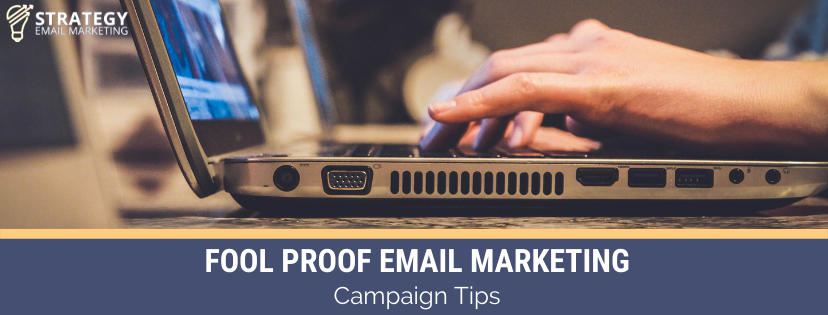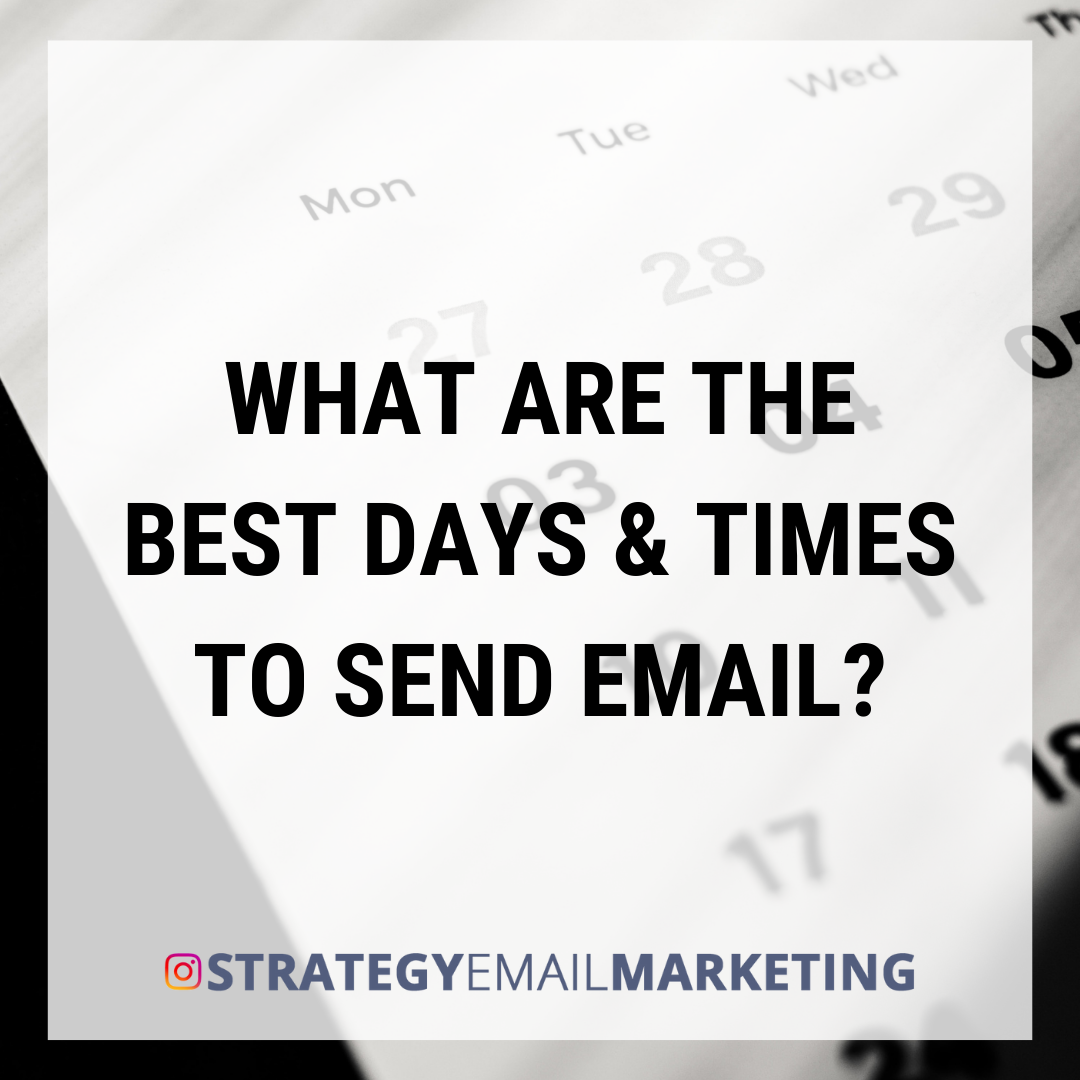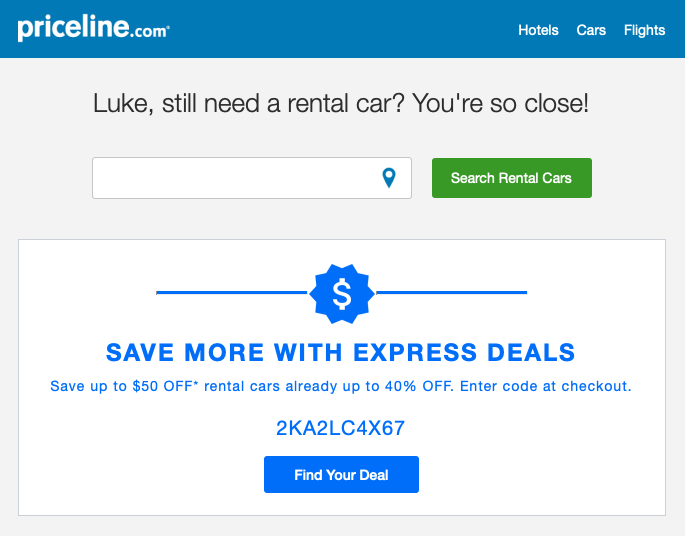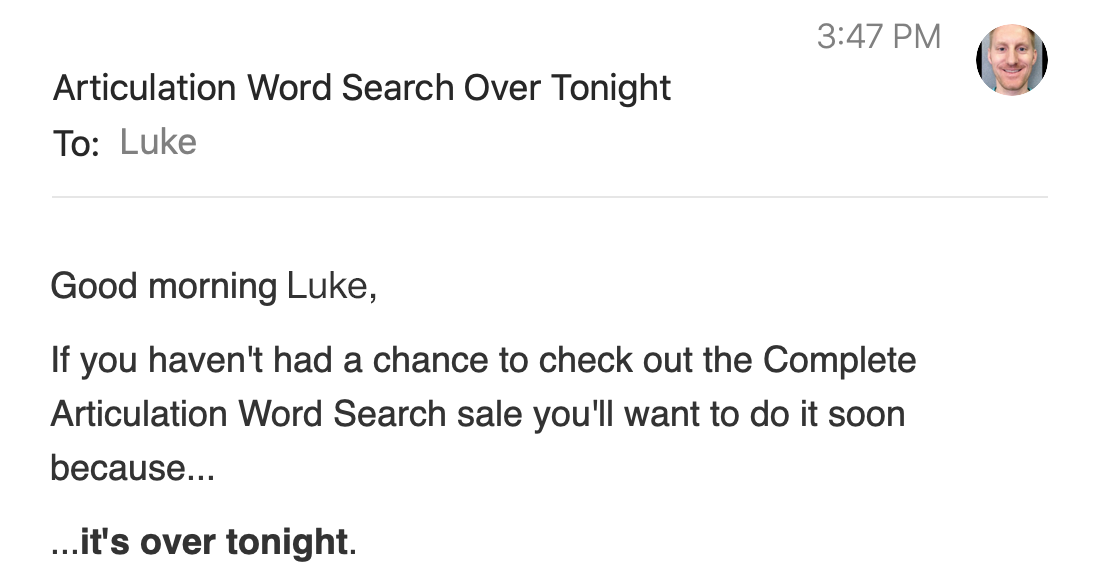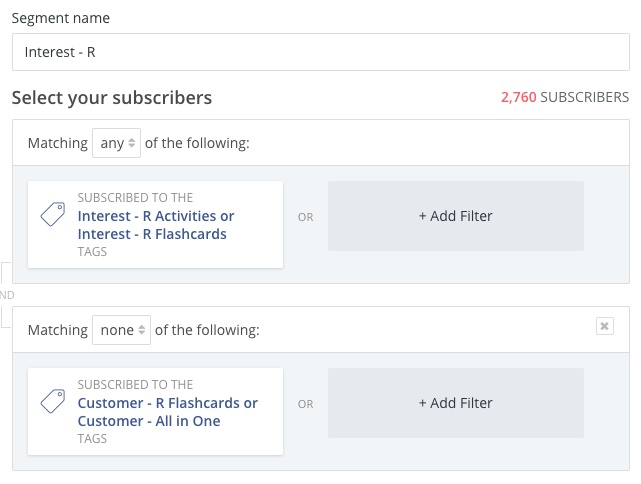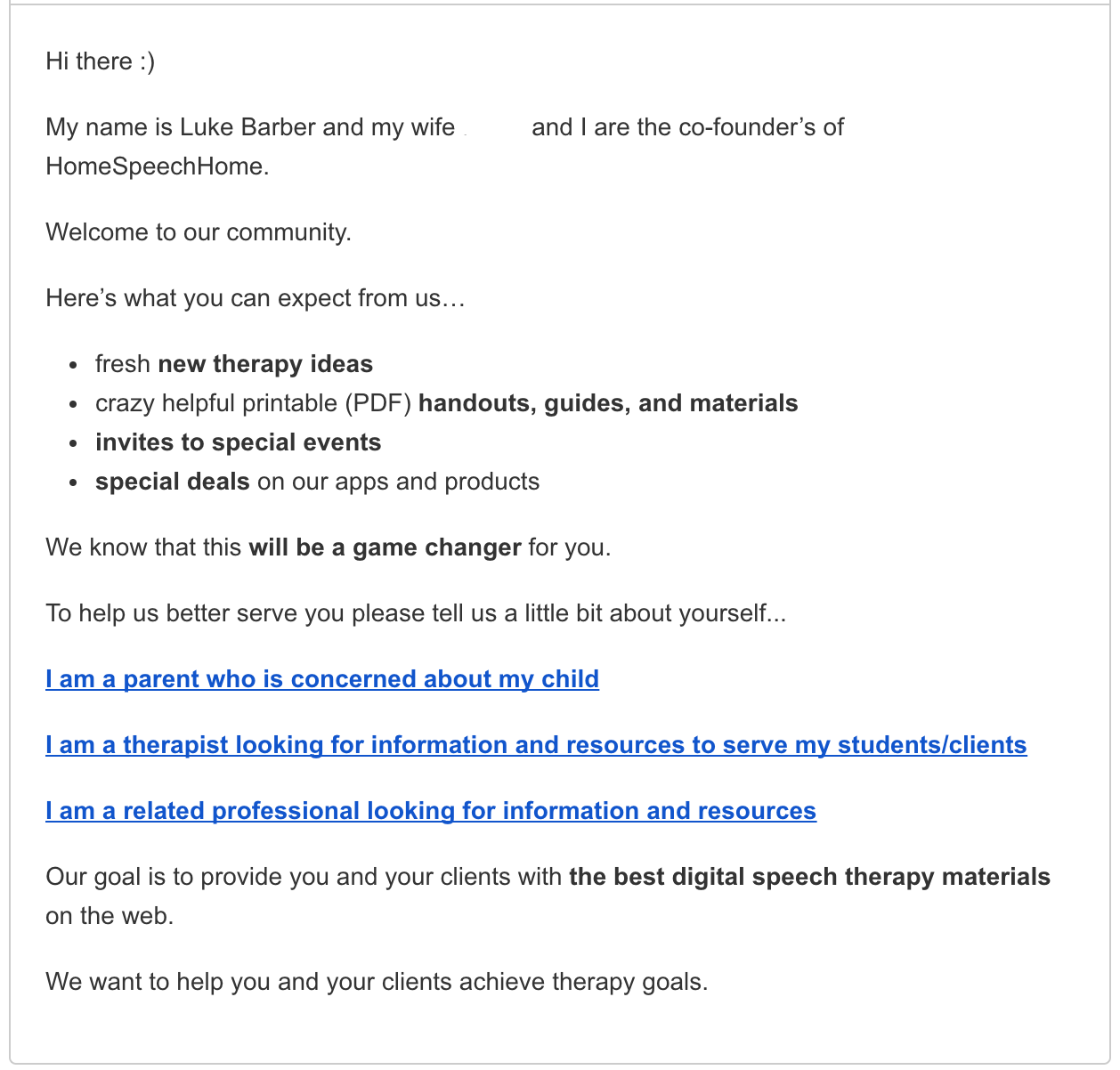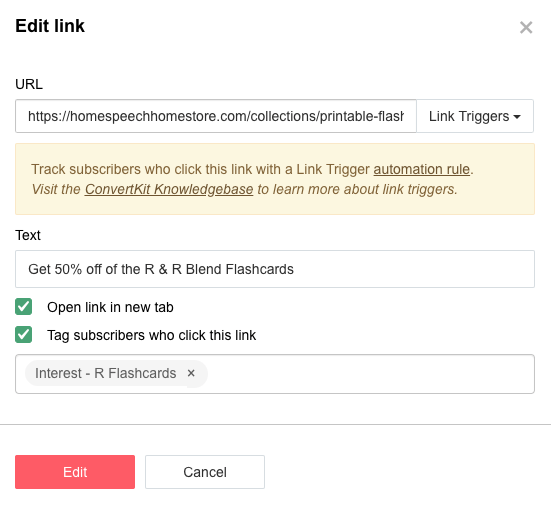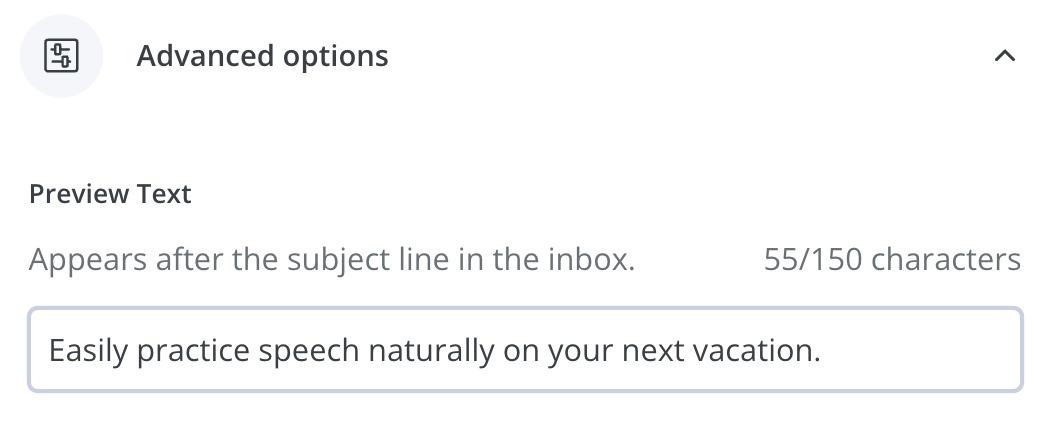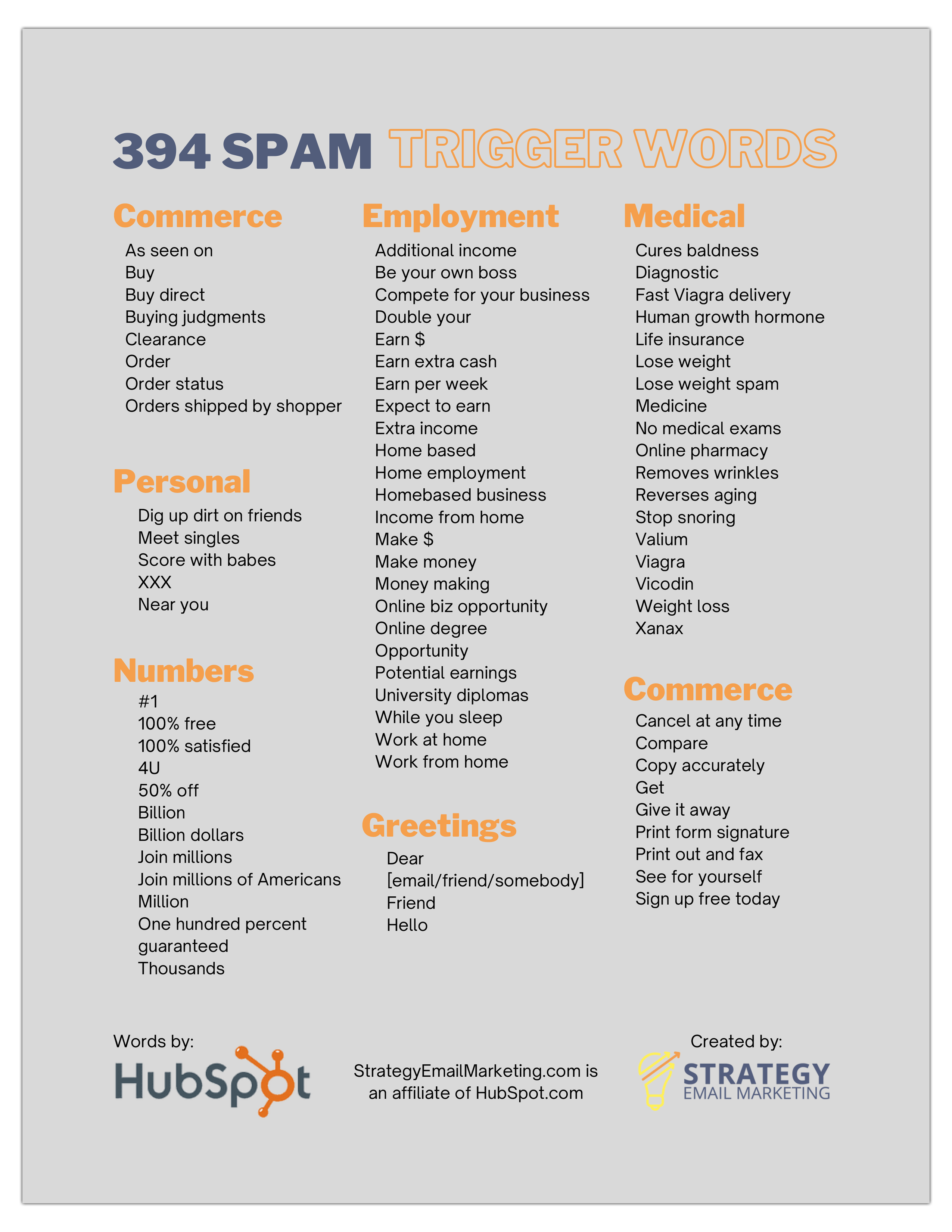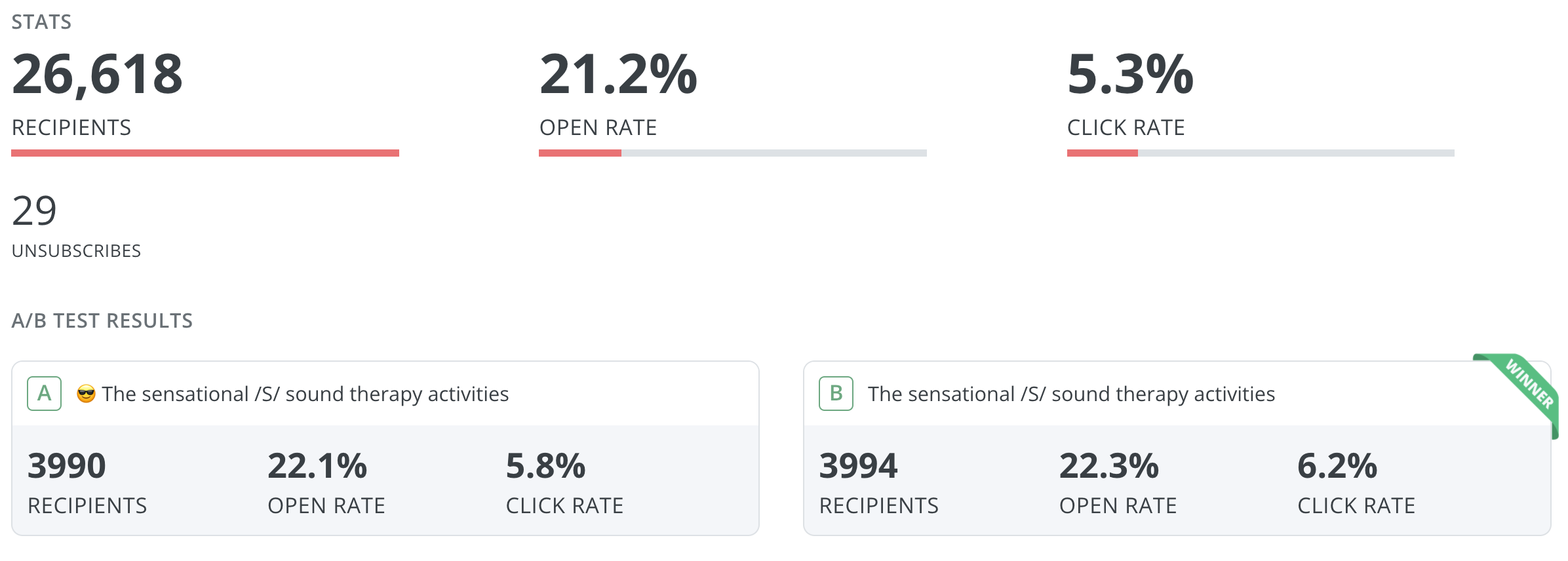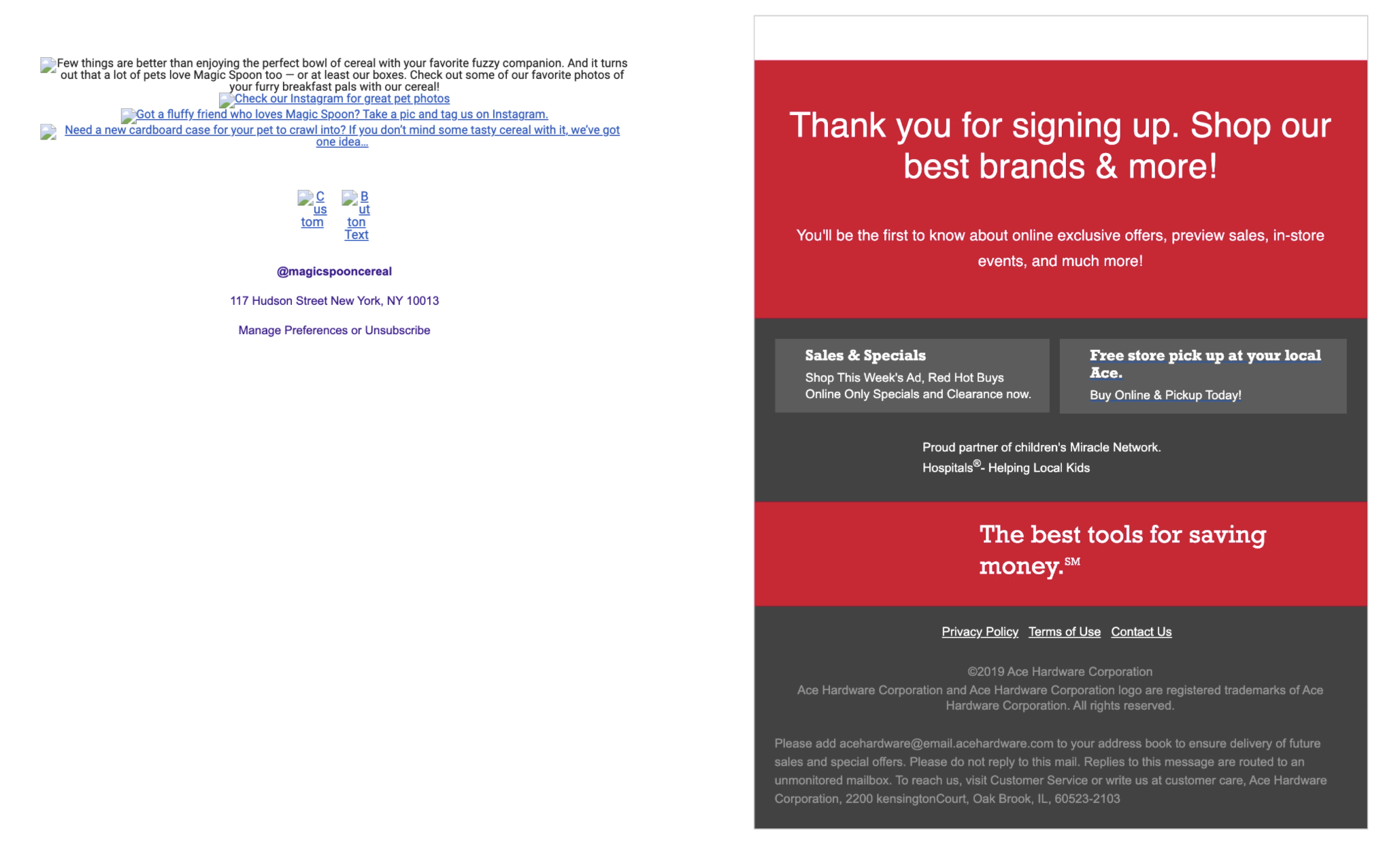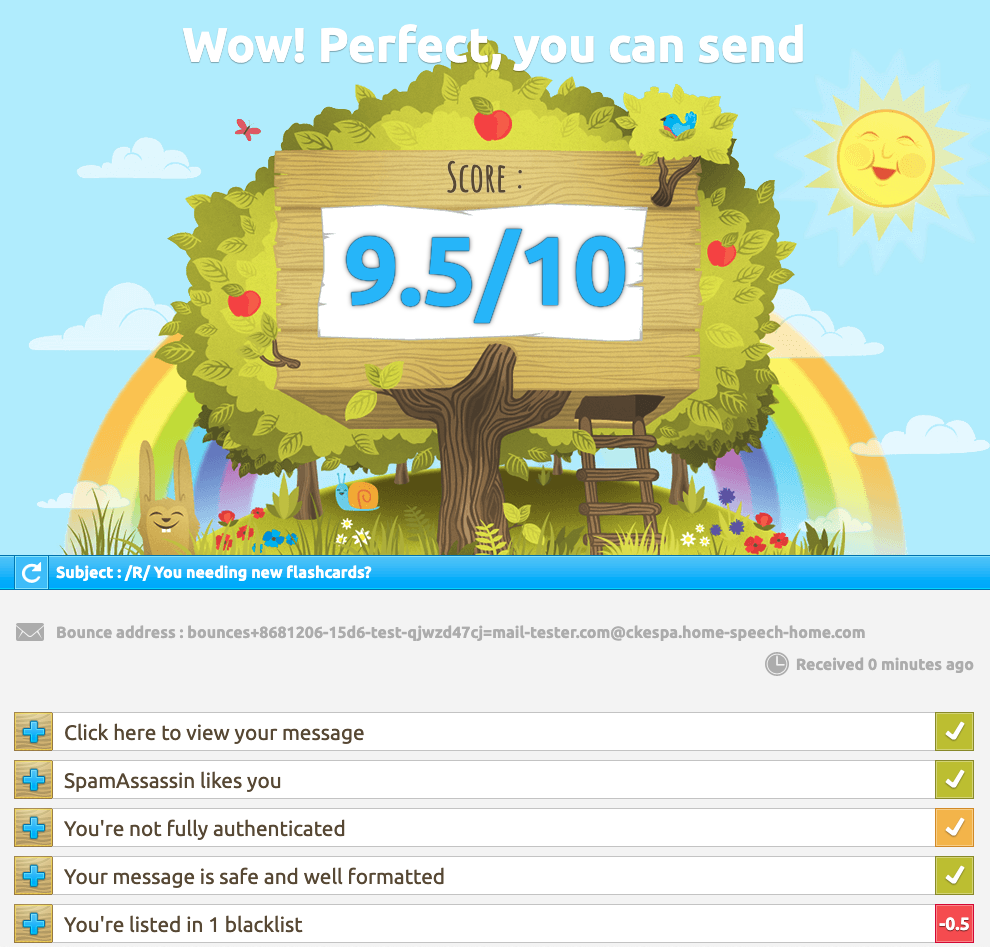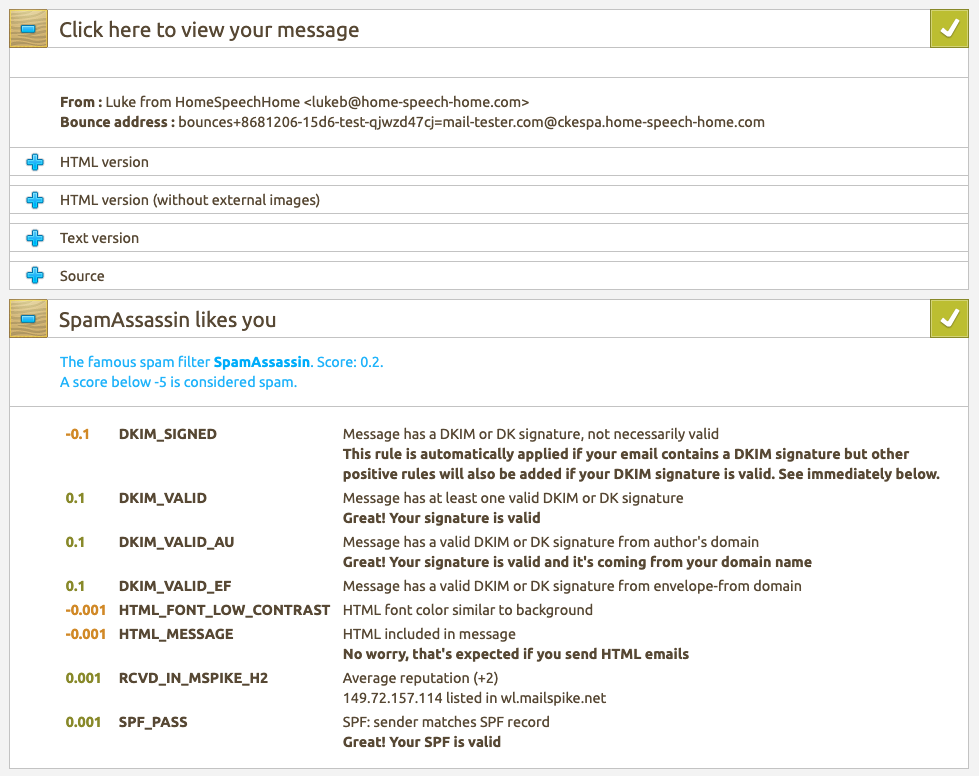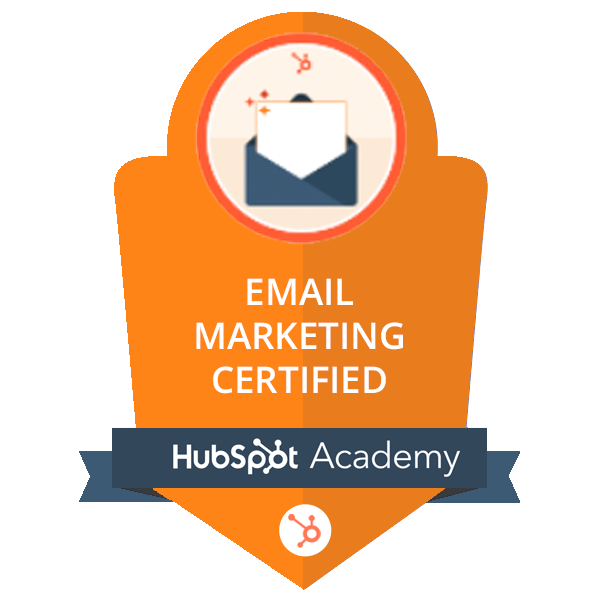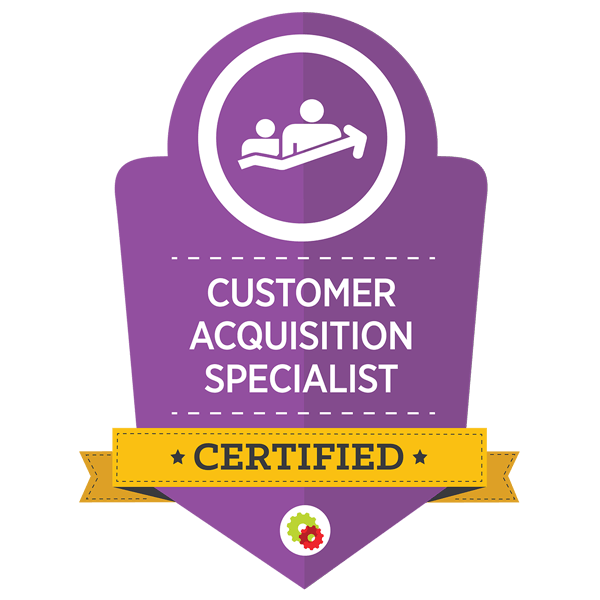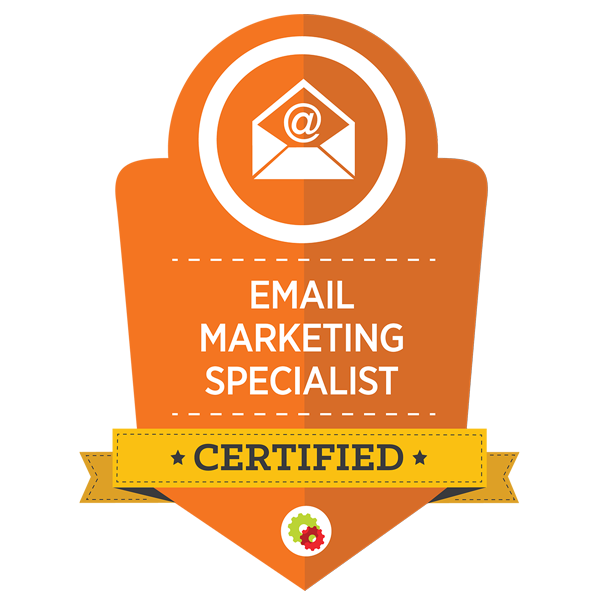Fool Proof Email Marketing Campaign Tips that Maximize Subscriber Engagement
These email marketing campaign tips are tried and true and will maximize your subscriber engagement.
And I don't mean asking them to marry you.
Engaging your subscribers by getting them to open, scroll, click, reply, forward, and share is the single most important job of email marketing.
Now before you say...
This isn't the first time I've discussed the importance of engagement and probably won't be the last.
And if you know how important engagement is, you also know we learn by repetition ;)
Make sure you are following all of these tips, and if not, start now, or make time to update your email broadcasts and sequences as soon as possible.
3...2...1...here we go.
Be precise with sending days and times
When doing any type of email marketing...you must know your reader, but more importantly you must understand their schedule.
I could just tell you that multiple studies have shown that the best days to send email are:
- Tuesdays
- Thursdays
- Wednesdays
And the best times to send email are:
- 10 a.m.
- 8 p.m.
- 2 p.m.
- 6 a.m.
...but the truth is, every list of subscribers is different.
If you have Google Analytics set up on your site, or a Facebook business page, you can check your data for the most frequent times fans interact with your site and posts.
These are great places to get an idea for a starting point.
Based on the type of content you create, you should already have an idea of who your subscriber is, as well as what time zone they are in!
And if you are the creator of your blog or website, it's likely you and your subscribers share similar interests and have similar schedules.
For my first website, my site visitors were Speech Pathologists (Therapists). Once I began email marketing, I learned that they were primarily Therapists who worked in schools.
Because I was a Speech Pathologist who also worked in schools, I understood their schedule.
I knew that work hours for them are between 7:30-8:00 a.m. and that they are required to work a 7 1/2 hour day and could leave work as early as 3:00-3:30 p.m.
HOWEVER, most Speech Pathologists (like teachers) work many hours past that time (and sometimes many hours before).
I had to determine if I should send emails to them when they were at work or at home.
By sending, testing, and tracking my results over time I was able to determine that my subscribers primarily opened my emails before or after work. My data showed lower open and click through rates when I sent them during work hours.
I found that Wednesdays at 7 p.m. typically received the most engagement.
Having said all of this, you need to ask yourself some questions, make educated decisions based on what type of schedule your subscribers have and start sending, testing, and tracking.
Is your subscriber someone who sits at a desk all day and has access to their email?
Or is it someone who works outside, gets email on their phone, but only has time to check it at lunch?
Maybe it's someone who works full time, has a family, coaches soccer, and only checks their email at 9pm after s/he puts the kids down for bed.
These are all important factors to know, in order to determine the best time to send email to your subscriber.
If you're not sending at the best days and times, it won't matter that you're sending at all...
...because no one will see it!
Return to top of Email Marketing Campaign Tips
Make it personal
We're going to have to ignore our buddy Mr. Pacino on this one.

Email marketing is and should be personal.
We live in a continuously personalized world and (thanks to Facebook) people expect marketing messages to be focused on what they are interested in.
If messages are not personalized...they are ignored!
In the second sentence above, I said the "purpose of email marketing is to provide value to your subscriber".
Singular not plural.
I said that for a reason.
One of my biggest pet peeves when I consume any type of content online is when I am addressed as "you guys", "everyone", or "friends".
Not that those are impolite greetings, but because even if your subscribers know online content is created for the masses, they still like things to be personalized to them...
...especially in email.
This comprehensive list of email marketing personalization strategies can give you many great ideas, but if you're just getting started...
The easiest way to personalize your email is to use your subscriber's name.
A word of caution on this: like crying wolf, if you use this tip too much, it will lose its effectiveness. Only use it once in a while, use it naturally, and use it for the emails you want to get opened most.
And when I say "use it naturally", I mean, write your email as if you were writing it to a close friend that you talk to on a regular basis.
SEE ALSO: Email Marketing Personalization Techniques that Just Plain Work
Personalize More by Segmenting
To take personalization one step further in your email messages, segment the messages you send to people who take action.
If your email service has advanced enough options, there are many data points you can use to segment your subscribers.
But, if you are running your own site and are primarily responsible for running email marketing campaigns (like I am), here are 2 simple ways to start segmenting your subscribers right now (and how to automate it) that will massively impact your email success.
Example 1 - Simple way to segment
The first way to segment is to ask them who they are in your series of welcome messages.
Set up three links in your email that ask your subscriber who they are or what they are needing or what kind of content would be most helpful to them.
Then when the subscriber clicks one of the links, you can create an automation to tag (label) them and send them a follow up nurture or indoctrination campaign.
This gives you invaluable information about who subscribed to your list and allows you to separate people based upon interest level, skill level, type of customer or a variety of other things.
In my case I was able to segment 3 different types of subscribers who signed up to receive emails from me.
One type of subscriber was speech therapists and related professionals and the other were parents.
Two completely different readers who have two completely different needs.
Plus, I was also able to understand how many speech therapists were subscribing compared to parents.
When I create content for therapists, I only send that content to therapists and related professionals and the same goes for parents. Same goes for when I run product sales.
Are you getting how powerful this is?
Example 2 - Simple way to segment
The 2nd way to segment (and best way to measure “action”) is by setting up link triggers for subscribers who click through the links in your emails.
Link triggers are God’s gift to email marketers.
They prevent you from having to manually download a CSV file of all the people who open and click every email you send in your email, upload it and tag those subscribers as people who opened and clicked.
Whenever I send out free content or run a sale in my email, I set up link triggers for those who click the link to get the freebie, read the content, or see the sale.
Then when I send follow up emails, I only send to those who clicked and were tagged.
This will dramatically increase your opens, click through's, sales, and deliverability, because now you are only sending more information and promotional content to the people who actually showed interest by taking action.
Better yet, they are now tagged as someone interested in a specific topic or product, so the next time you have new content around that topic or promote that product, you have a group of people you can follow up with again if they don’t purchase the first time.
This link trigger automation can be set up pretty easily. You can see how I do this with my email marketing service in the video below.
Stand Out in Subject Lines
As previously mentioned, the single most important job of email marketers is to engage subscribers.
The first step is to get your subscriber to notice your email and open it.
And that starts with your subject line.
Great subject lines are short (6-10) words and are provocative, controversial, relevant, or a combination of all three.
Subject lines should have at least 1 of 7 elements:
- Direct benefit
- Curiosity
- Scarcity
- News
- Social proof
- Story
- Humanity
4 Types of Subject Lines
Blind or Curiosity - "Weird but profitable", "Less ____ = More Sales"
Direct or Benefit - "Get more clicks", "Increase Traffic"
Urgency or Scarcity - "Sale ends tonight", "Ending soon!"
Proof or Results - "She makes 6 figures per month", "2741 leads in 30 days"
Use the 2nd Subject Line
Don't forget to use that second subject line to provide more detail about your email.
Giving your reader a short digestable overview (and possible teaser) of what the email contains can lead to higher open rates if your content is relevant.
The second subject line gives you an additional 6-10 words to begin explaining the benefit(s) your subscriber will get by opening the email.
Often, email marketers have “view this email in a browser” in the 2nd subject line.
While it is a good strategy to have a webpage version available for your subscriber to view in case your email doesn’t display correctly…
...it is a bad strategy to have it as the second subject line because it wastes the opportunity to further hook your readers interest after the subject line.
Use numbers in your subject line
Get your subject lines to stand out by using numbers, they're great for getting attention and odd numbers get people’s attention best. Psychologically, specificity seems to be more legitimate.
Consult the "Numbers" section of your printable list of SPAM words (free download below) on this one to make sure you're not using SPAMMY number ;)
Use RE: in your subject line
You might be thinking “I pay more attention to Replies and Forwards”, I could use those to get attention in my email subject lines right?
While you are right in thinking that (and you’re among friends) I don't recommend doing this often or at all.
Often when we email someone we know they will "Reply" (RE:) and we are more likely to notice that email believing it is from a friend or acquaintance.
While it is a clever way to get your email subject line noticed it can be misleading, potentially upset your reader, and effect your deliverability rates.
Email service providers constantly update their algorithms to verify that “Forwards” and “Replies” are real (e.x. they aren’t from a mailing list) and will likely penalize you if they are not.
I caution you to use this technique sparingly.
Use EMOJIs in your subject line
👀 One of the best ethical email marketing campaign tips I can give you to get your emails noticed is to use emoji's or symbols in your subject lines.
For emoji's I use ➡️ emojifinder.com
For symbols I use ➤ coolsymbol.com
Nothing will catch your readers eye better than an emoji, when scrolling through an inbox of text.
😍❤️🔥😎💦🍪☘️
The three symbols that generate the highest open rates are the heart, sun, and umbrella.
Additionally, I've read about studies that have been done wherein Email Marketers used emoji's and saw higher open and share rates!
Don't use SPAM Words in Subject Lines
You may not know it but every email message you send is highly scrutinized by the Email Service Providers (ESPs).
One of the easiest ways to show up in the SPAM folder is to...you guessed it...use spammy words in your subject line.
Hubspot outlines a huge list of SPAM words to avoid using.
You can also view them by downloading a free copy (no email required) of SPAM categories and words by clicking the image.
Download this list and keep it handy, so you can avoid using these words.
You do want to legitimately create curiosity in your subject lines, so if you are running a sale, it’s OK to put the word “Sale” in your subject line.
Just be sure the body copy in the email has verbiage that focuses around a product sale.
However, if the majority of your emails that you send out have the word “Sale” in them, use synonyms such as “discount”, “for less”, or “half-off”.
A/B Split Test
If you’ve been in the online marketing realm for at least a few months, you’ve probably heard the phrase “test, test, test!”
Testing and measuring is the biggest reason why businesses pour hundreds of millions of dollars into online advertising mediums (social, email, content, video, etc.).
Effective split testing can greatly increase opens, clickthroughs, and ROI, ignoring it is a huge mistake.
To split test properly make sure to:
- Pick only one variable to test at a time (e.x. subject line, CTA)
- Choose your goal (higher opens, more clicks)
- Split your email list equally and randomly
- Decide how significant your results have to be
- Run the test long enough to get substantial results
While this may seem like a long list, my email marketing service has a split testing tool set up right inside of it and other services I’ve seen before do too.
The ability to split test should definitely be on your list of required features if you are comparing email marketing services.
Use More Text and Less Images
Similar to webpages, email service providers check for the amount of text in the body of your email.
If you insert too many images, or don’t have enough text, this can often be considered as low content value, can be interpreted as spam, and is at risk for ending up in the junk folder.
AAAAAAND...in the off chance that your image-laden email makes it to the inbox many ESPs and ISPs (internet service providers), especially in the work setting, have image blockers for security, so your recipients wouldn't see the images anyway.
If you plan to use HTML styled emails (more on this below), consider using text in:
- menus
- buttons
- links
...instead of images with text in them.
This will add to your text count and decrease the chances of ESPs thinking they are spam content.
Finally, make sure to use ALT text or stylized ALT text with your images so the reader will have an idea of context if your images don't show.
Use Plain Text Emails
This is a double edged sword because there is nothing more satisfying than sending (or receiving) a beautifully polished, well-designed email that is visually appealing.
But on the other hand if no one sees it...what’s the point?
In the early years of email the majority were text based with (maybe) an image. As email marketing evolved however, so did the creativity of email messages with coding and styling.
Unfortunately, email service providers are no respecters of email marketers and don’t care how pretty emails are.
Their job is to analyze code and copy to determine relevance, legitimacy, and safety for their users.
Additionally, ESPs are all set up differently and display code and assets (especially Images) differently.
If you are going to primarily be sending HTML emails you’ll definitely want to look into an email checking/validation tool.
I like Mail-Tester.com
Competition for the inbox is fierce, know that plain text emails have a higher chance of getting delivered because they are readable regardless of your subscribers email client.
Hubspot reports that HTML emails receive a 25% lower open and click through rate.
Use Engaging Media (images, gifs, etc.)
There are many things to consider when you lovingly craft an email that you want to be seen.
Understand that just because you go the plain text route, doesn’t mean that your emails have to be boring.
Sprinkling a few relevant images in your plain text emails will definitely break up the length of text and help you tell your story more visually.
Remember, computers read code, so when you insert pictures be sure to label them with those non-spammy words.
Some ideas you might use are pictures of:
- yourself
- your business
- the header image of your blog post
- product images
- product reviews
- map images
...to name a few.
And what about videos?
Wouldn't it be awesome if you could wow your subscribers by putting videos into your emails?
Well guess what, you can!
In this article, I show you high and low tech ways to leverage video email marketing.
Try to always use "P.S."
Last but not least, always try to use "P.S." at the end of your emails.
No matter how much or how little people read in your email, 90% of people read the P.S. according to Professor Siegfried Vogele in his studies of direct mail response (Voegele, Handbook of Direct Mail, p 202).
You can use the P.S. to let your subscriber know what you will send next, mention a freebie or promotion (if it wasn't mentioned in the body of your email), invite them to an event, ask them to subscribe to your Youtube channel or Podcast, or join you on one of your social media channels.
If those aren't enough ideas, one P.S. I use often (especially in product sale emails), asks my subscriber to Forward my email to someone if they feel it would benefit them.
Conclusion
These are the best email marketing campaign tips I can give you, I hope you find them helpful.
You certainly don't have to use all of them every time you lovingly craft an email to your readers, but I can say with confidence that by using them...
...I have enjoyed higher engagement and sales by implementing them into my email marketing messages.
If you found this helpful, please share it and join our free Email Marketing Wisdom Newsletter for more.
- Homepage
- Email Marketing Campaign Tips
